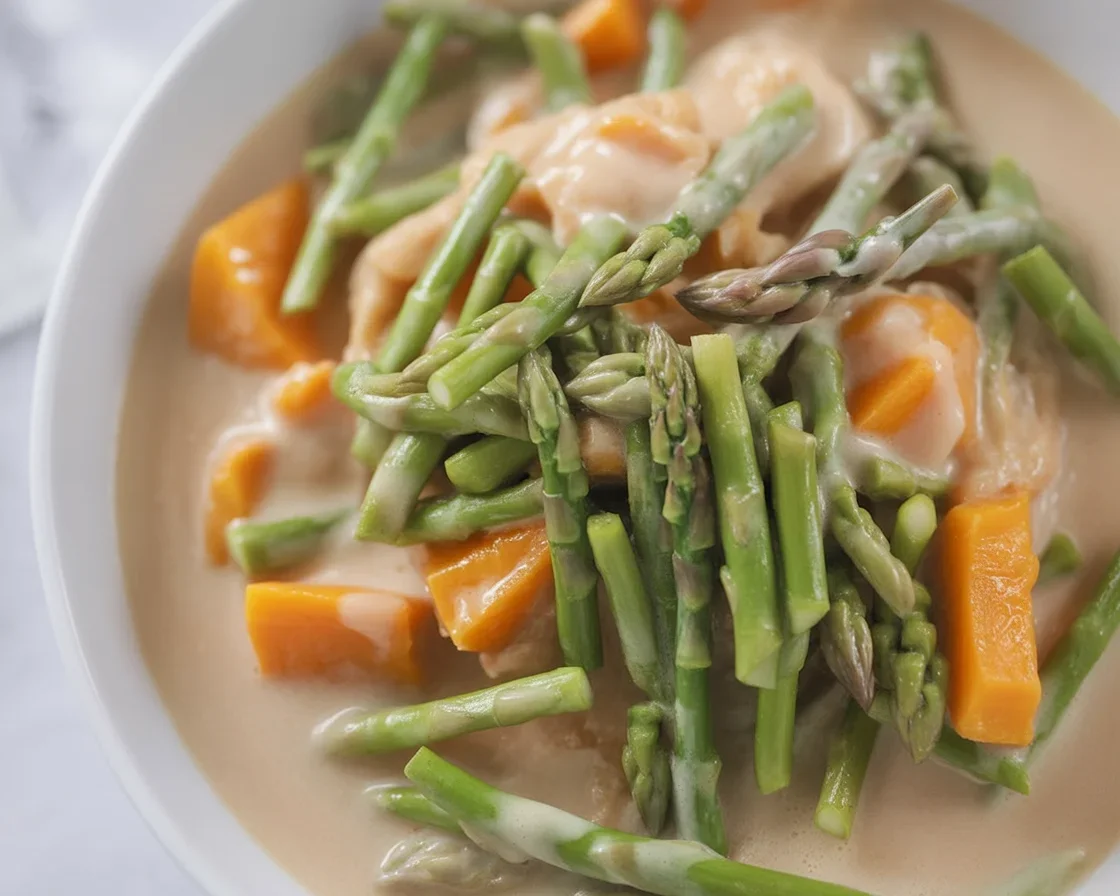Filipino ginataang kalabasa at sitaw is the kind of dish you pull out when you want something comforting but not boring. Ever get tired of just plain meat dishes? Me too. Sometimes you just want veggies but in a way that screams flavor, right? That’s where this favorite jumps in. Oh, and guess what, it’s actually super easy to make. If you’re already browsing for more hearty Filipino bowls like this, you might wanna check out Healthy Filipino Recipes or maybe dig into a party main dish that’ll wow everyone. 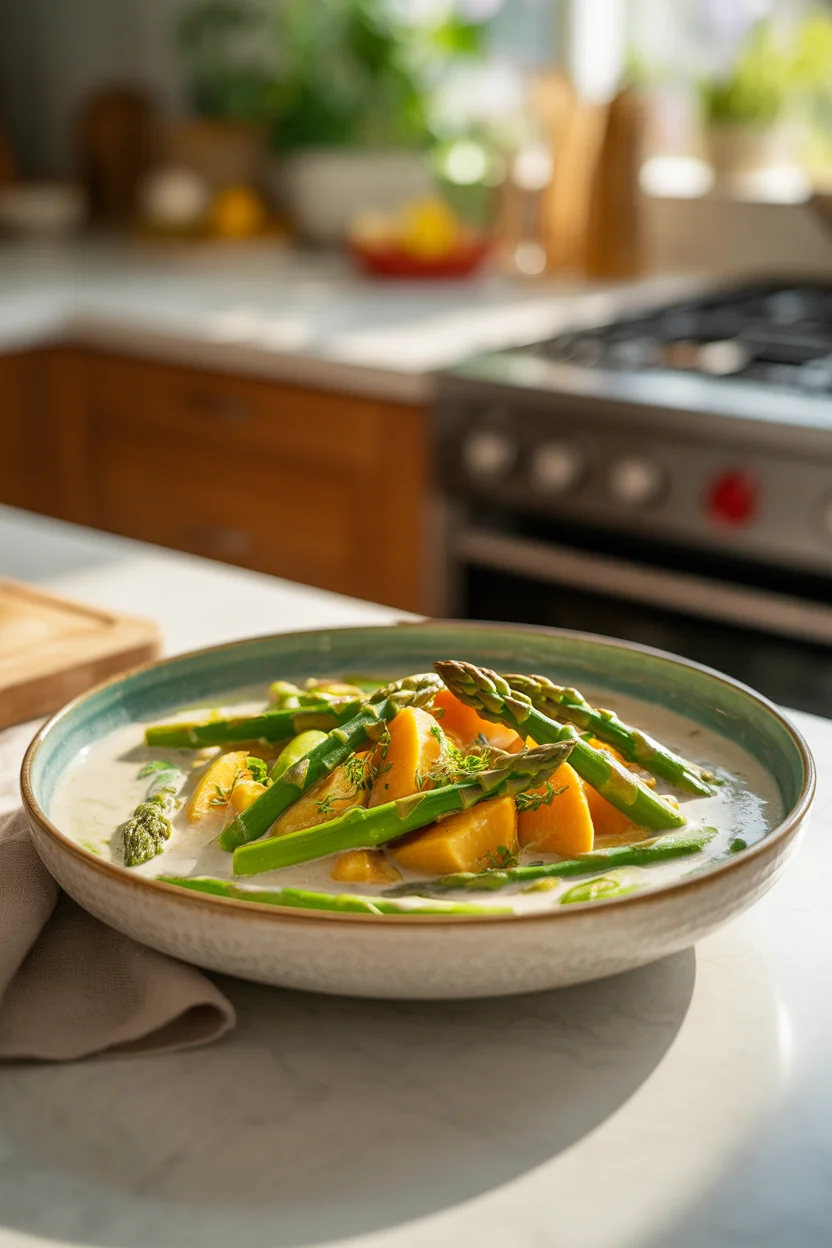
Overview of ginataang kalabasa
Let’s talk basics. Ginataang kalabasa at sitaw is a stew, but not your usual heavy beef or chicken number. Instead, brightly colored squash (kalabasa) and long green string beans (sitaw) swim around together in a pool of creamy, slightly sweet coconut milk. I always say, this recipe is like a hug from Lola after a long school day—simple, homey, no-fuss comfort on a plate.
On ordinary days growing up, this stuff was a staple. It’s not exactly fancy, but man does it hit differently when you want something both filling and familiar. There’s a bit of everything in there: sweetness from the squash, crunch from the sitaw, and a lush coconutty sauce that makes you think, “Wow, this would win medals if there was a home-cooked Olympics.” You can toss in shrimp, pork, or even just keep it all veggies if you want to skip the meat. Versatility is its middle name.
Oh, and if you hang around Filipino households long enough, you’ll see this gets cooked in a million ways. Some folks add squash flowers or malunggay leaves, some add a kick of chili. It’s like a five-star restaurant meal but cooked out of your own kitchen. Trust me, you won’t be bored. 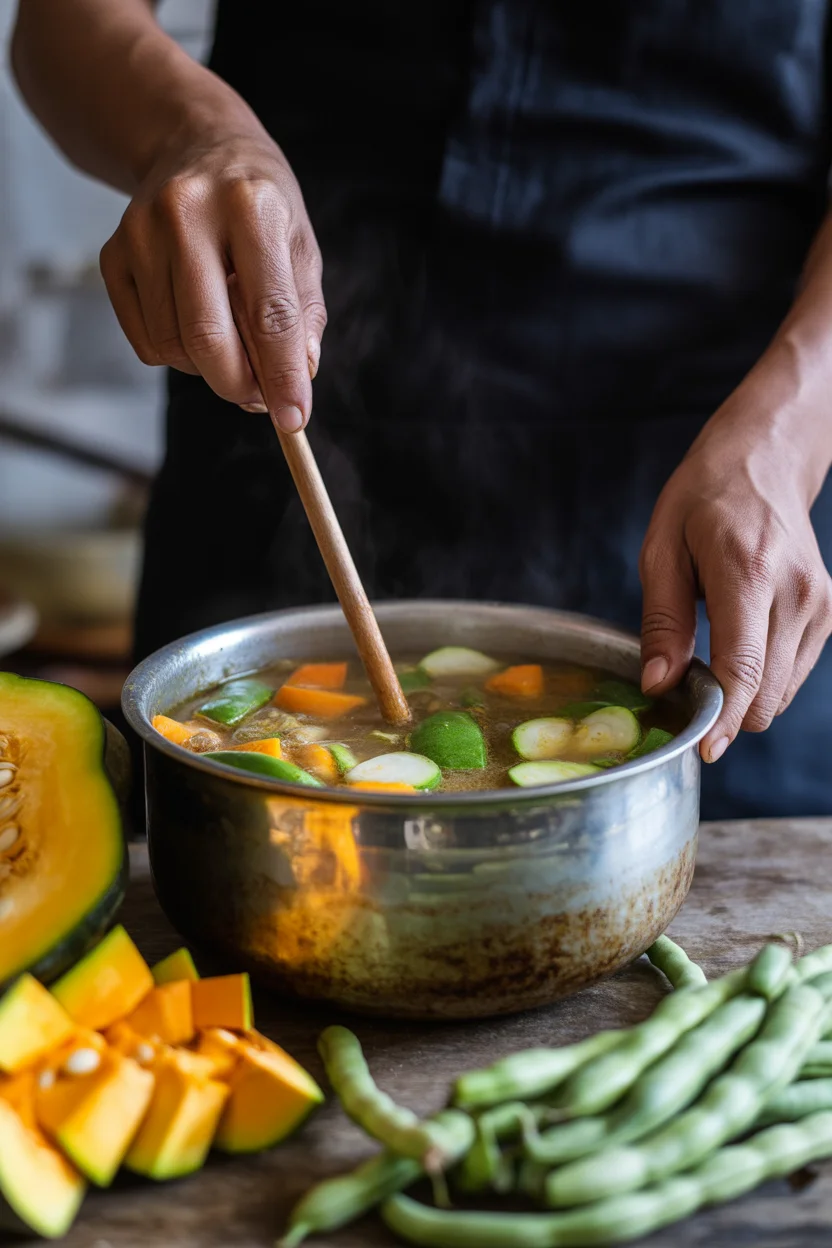
<table_seo>
Ingredients
Not asking you to raid a specialty store in the next city—just a basic trip to the market will do. Here’s what you need for ginataang kalabasa at sitaw:
- 1 medium squash or kalabasa (peeled and cubed, but if the skin is young and soft, honestly, I leave it on sometimes)
- 1 bunch string beans/sitaw (chopped into 2-3 inch pieces)
- 1 can coconut milk (or use fresh if you want to flex a little)
- 4 cloves garlic (chopped not minced—no need to get fussy)
- 1 onion (sliced thin)
- 2 tablespoons cooking oil (any neutral oil)
- Fish sauce or salt to taste (every home cook seems to have opinions on this—so pick your battle)
- Optional: shrimp, pork, chili peppers (you know how you like your food)
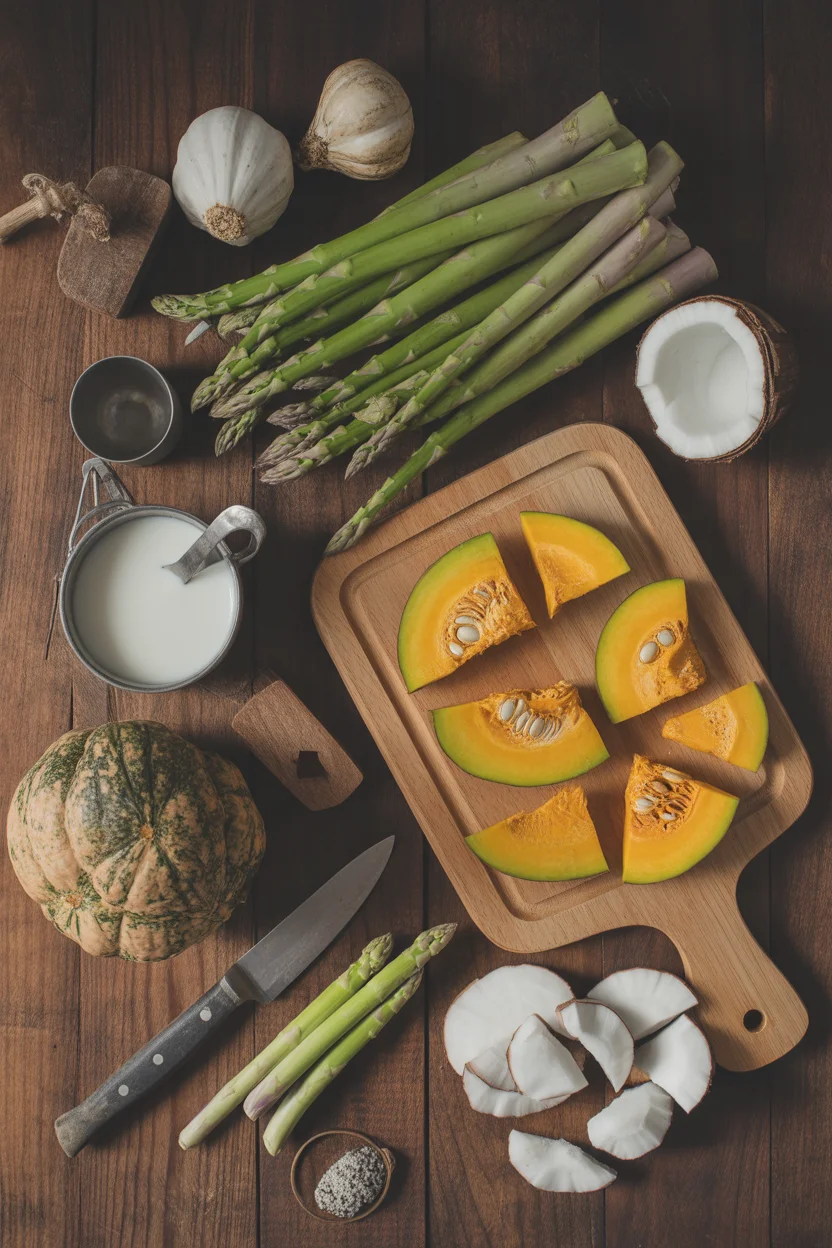
Preparing vegetables
Cutting up the squash is, honestly, the messiest part. If it’s a really tough kalabasa, poke a few holes and microwave it for about five minutes to soften a bit. Makes slicing so much less of a hand workout. Just peel and cube into chunky pieces.
Next, rinse the string beans and chop them to whatever size fits your pot or, okay, your mood that day. Sometimes I do long pieces for fun or short chunks if I want to scoop them easily with a spoon. Nothing fancy, just wash them well because gravel sneaks up sometimes (learned that the crunchy way).
While you’re at it, peel and chop up your garlic and onion. This is not Top Chef so no one’s judging your dice game, promise.
“Tried this on a whim and couldn’t believe how easy it was to prep. My kids ate veggies without complaints—total win at the dinner table!”
Cooking in coconut milk
Alright, here’s where the magic happens. Heat oil in your favorite pot (look, I won’t judge if your ‘favorite’ has battle scars). Sauté garlic then onions until they look just soft and smell good. Toss in the pork or shrimp now if you’re using them—let them get some early flavor.
Now, drop your cubed squash into the pot. Let them join the fun for a few minutes. Pour in enough coconut milk to just about cover everything, but don’t drown your veggies. It should bubble away happily, not boil over like a science experiment gone wrong. Lower the heat and let it simmer. This is basically the “chill” phase. Stir now and then, so nothing sticks.
When the squash starts getting soft (poke it with a fork), add the sitaw. Let it keep simmering until it’s just tender but still a tad crisp. If you overdo sitaw, it gets limp and sad—nobody wants sad beans.
Adding seasoning
Here’s where you get to be the boss. Some folks go hard with fish sauce, others use plain salt. I start slow and taste as I go because you can always add more but never take it back if you overdo it. Sometimes I give it a shot of black pepper for good luck.
Thinking of adding chili? Go for it, especially if you love a hint of heat mixed with creamy sauce. Pro tip: even a squeeze of calamansi before serving does wonders. That bright tang? Wow. But careful with salt if adding fish sauce—taste every time.
Serving with rice
Honestly, ginataang kalabasa at sitaw without rice is like a movie without popcorn. Here are a few ways I serve it up:
- Pile it high over steaming white rice (classic, can’t be beat)
- Pair it with brown or red rice for an “I’m being healthy” flex
- Add a fried fish on the side if you’re feeling extra
- Zap leftovers in the microwave—the flavors get even deeper overnight
It’s a crowd-pleaser for lunch or dinner (even breakfast if you’re adventurous—no judgment). Pro-tip: Serve it family-style and watch people dive in.
Health benefits
This isn’t just delicious, it’s actually good for you. The kalabasa brings beta-carotene (yup, like carrots), a nutrient that’s awesome for your eyesight and skin (my mom swears by this). String beans lend much-needed fiber—great if you, cough, forget vegetables now and then. Coconut milk is rich, yes, but also has healthy fats that fill you up and keep you going.
What I love most is that you can make it even lighter; just use less oil or scoop out the coconut cream and mix with a splash of water for a thinner but still creamy broth. Overall, it’s a recipe that checks all the boxes: flavor, comfort, and nutrition. If you’re looking for more simple yet nourishing options, see the 10 Kid-Friendly Filipino Recipes or jump to Healthy Filipino Recipes for more ideas.
Common Questions
Can I use other vegetables in ginataang kalabasa at sitaw?
Yep, totally. Throw in eggplant, spinach, even bell pepper. This stew is chill about substitutions.
Is there a big difference between fresh and canned coconut milk?
Fresh has more aroma and a touch of sweetness, but canned works fine. I use canned almost always—no one’s ever noticed.
Can I make this vegan?
Absolutely, just skip the meat and use all veggies. It’s already dairy-free and naturally good for plant-based eaters.
My stew turned out too watery, help!
Just let it simmer longer with the lid off. The sauce should naturally thicken up as the water cooks out.
How long can I store leftovers?
In the fridge, about three days. On day two, honestly, it tastes even better (flavor deepens; trust me).
Why this dish should be on your table tonight
There you have it—ginataang kalabasa at sitaw is the friendliest stew in the Filipino home cook’s playbook. You get veggies, creamy coconut milk, a rainbow of flavor, and a meal that always delivers comfort. Whether you’re looking for simple weeknight meals or healthier choices, don’t be shy—just go grab that kalabasa! Need more inspiration? Browse unique takes like the classic on Panlasang Pinoy, try a twist with shrimp on Kawaling Pinoy, or even peek at this plant-based version from Cinnamon Snail. Let me know how yours turns out—and don’t worry, your kitchen will smell five-star. 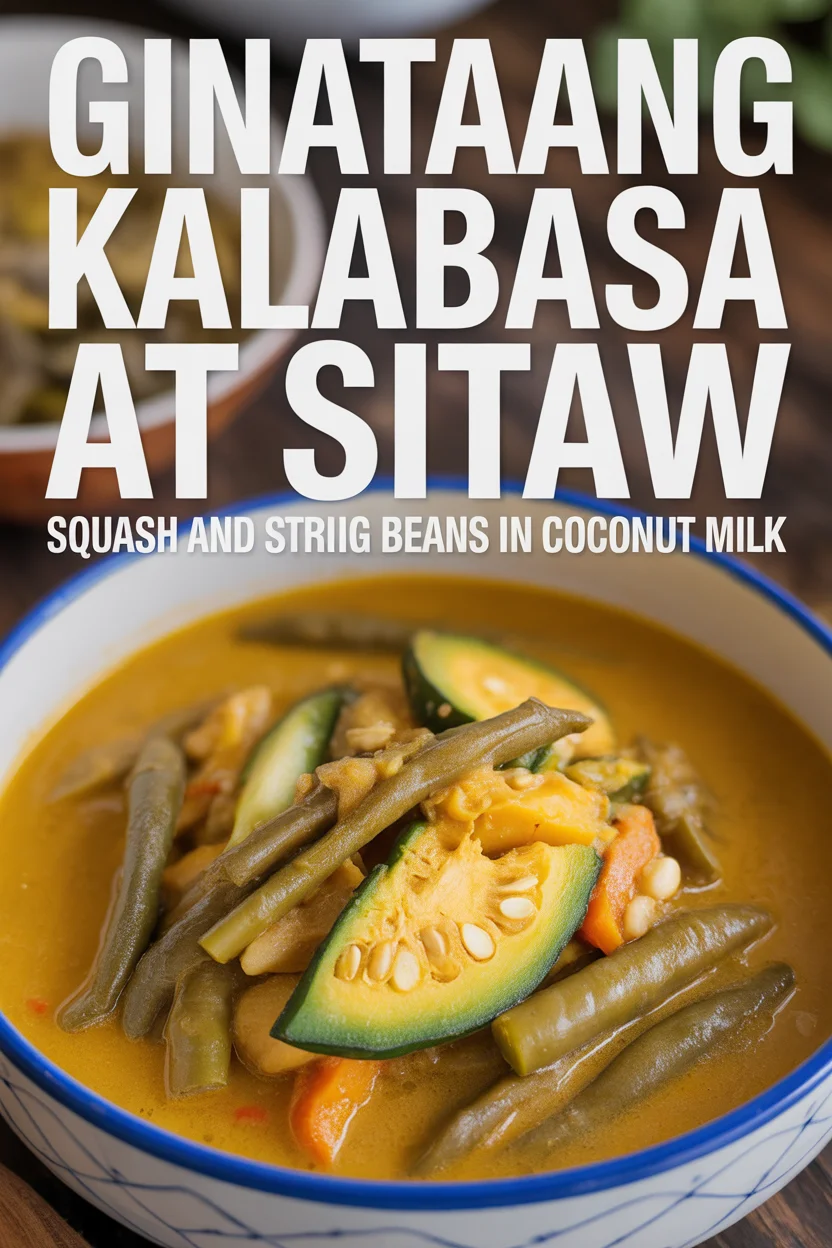
Ginataang Kalabasa at Sitaw
Ingredients
Main Ingredients
- 1 medium squash or kalabasa, peeled and cubed If the skin is young and soft, it can be left on.
- 1 bunch string beans/sitaw, chopped into 2-3 inch pieces Adjust size according to personal preference.
- 1 can coconut milk Fresh coconut milk can be used if desired.
- 4 cloves garlic, chopped No need to mince.
- 1 medium onion, sliced thin
- 2 tablespoons cooking oil Any neutral oil is fine.
- to taste fish sauce or salt Personal preference for seasoning.
- optional shrimp, pork, chili peppers Customize according to preference.
Instructions
Preparation
- Cut the squash into cubes, using a microwave for tough kalabasa if necessary to soften.
- Rinse and chop the string beans to preferred size, ensuring they are clean.
- Peel and chop the garlic and onion.
Cooking
- Heat the cooking oil in a pot over medium heat. Sauté garlic and onion until soft.
- If using meat, add the shrimp or pork now and let it cook for a few minutes.
- Add the cubed squash to the pot and pour in coconut milk until the vegetables are nearly covered.
- Reduce the heat and let the mixture simmer, stirring occasionally, until the squash is soft.
- Once the squash is soft, add the string beans and continue to simmer until they are tender.
Finishing Touches
- Season with fish sauce or salt to taste, adjusting as needed.
- Optional: Add chili or a squeeze of calamansi for extra flavor before serving.
Serving
- Serve ginataang kalabasa over steaming rice for a complete meal.
- Pair with other sides or use leftovers for an even better taste the next day.
